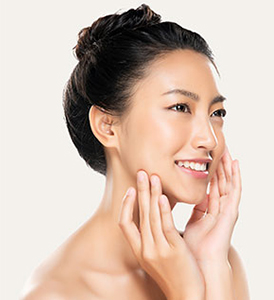Rhinoplasty Singapore
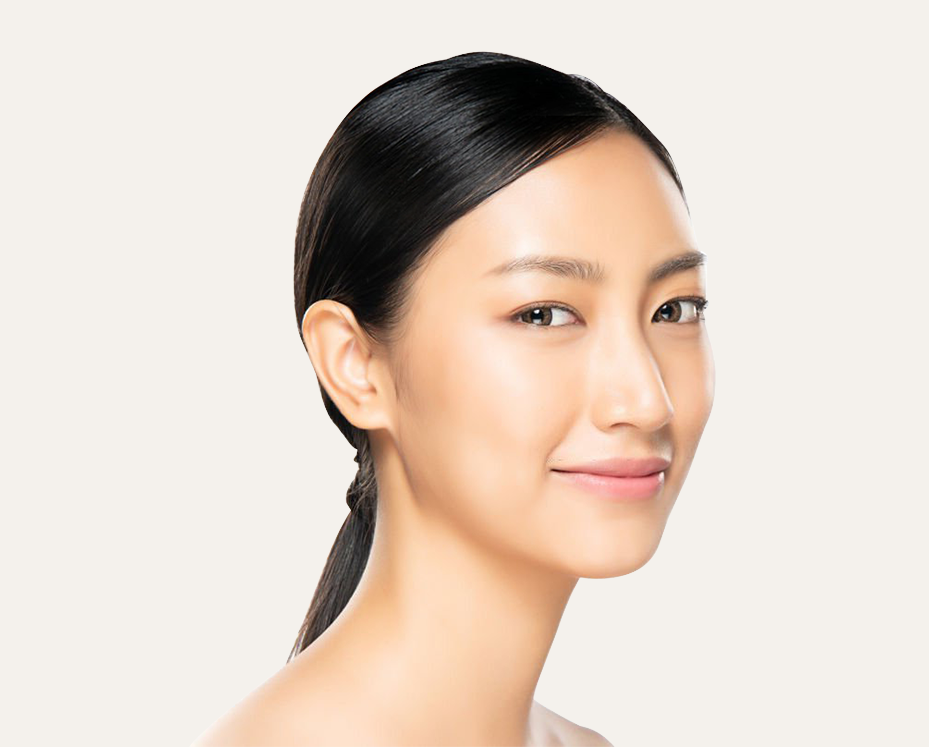
Why Choose Astrid for Rhinoplasty
- At Astrid, our surgeons are trained in both Asian and Caucasian rhinoplasties through their training in South Korea and in the UK.
- We have in-depth understanding of both the nasal anatomy and desired aesthetics.
- We offer both open and closed rhinoplasties.
What is Rhinoplasty?
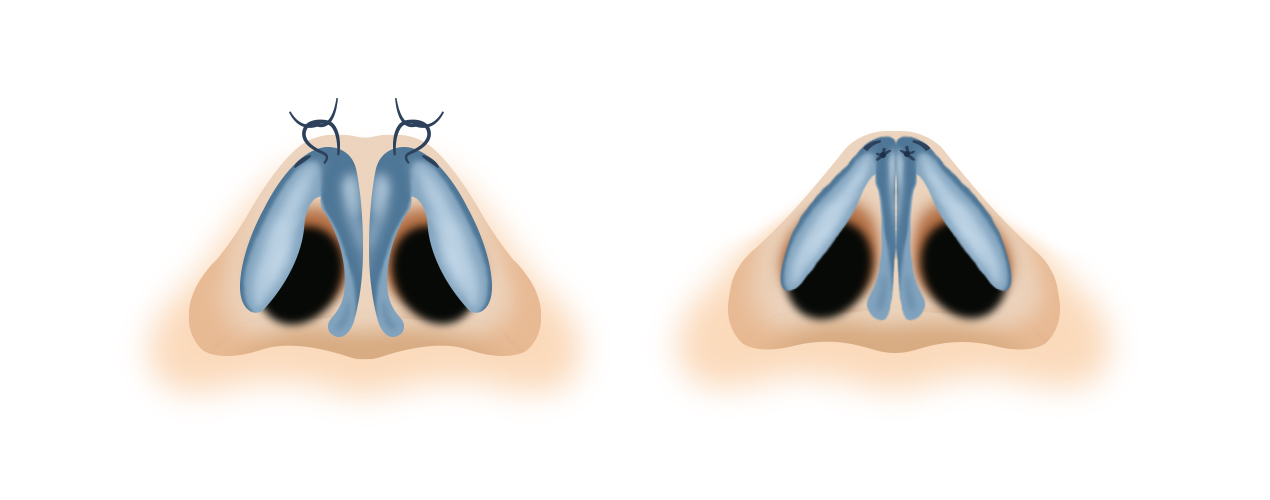
A rhinoplasty is a set of procedures that seeks to improve the nasal form and function. The procedures done are different depending on the needs and desires of each patient.
Common rhinoplasty procedures include:
- Raising or reducing the dorsum
- Raising or reducing the tip
- Refining the tip (tip-plasty)
- Changing the projection of the tip (short nose or long nose correction)
- Correcting asymmetry / deviation
- Hump reduction
- Narrowing the alae (alarplasty)
- Straightening the septum (septoplasty)
The aim is to achieve a symmetrical and refined nasal profile that harmonises with the rest of our facial features.
Open Rhinoplasty vs Closed Rhinoplasty
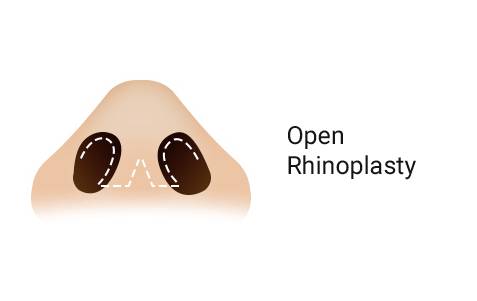
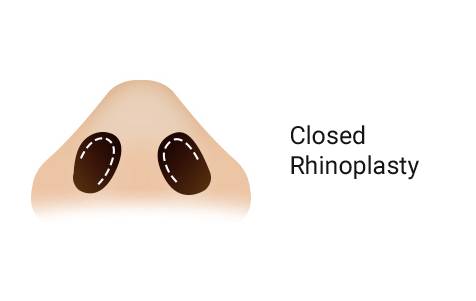
Closed Rhinoplasty
With the closed approach, the incisions/scars of the rhinoplasty are hidden within the nostrils and are essentially scarless. A closed approach works well when minimal corrections are needed, and can be used for bony osteotomies, nasal dorsal enhancements, tip correction or refinement, alar modifications, and bony dorsal hump reduction.
Procedure Time
1 hour
Anaesthesia
Local anaesthesia /Light Sedation
Hospitalisation
Day Surgery
Recovery Time
5 days
Open Rhinoplasty
In the open rhinoplasty approach, in addition to the nostril scars, there is a short incision across the columella (base of the septum). Open rhinoplasty is often required when more advanced surgery for tip-plasty is planned, and it can be used for nasal dorsal enhancement, tip correction or refinement, alar modifications, septoplasty, full dorsal hump reduction, and bony osteotomies.
Procedure Time
4-5 hours
Anaesthesia
Light Sedation
Hospitalisation
Day Surgery
Recovery Time
7-10 Days
Pros and Cons of Open and Closed Rhinoplasty
There are a handful of different reasons why you might want to opt for one rhinoplasty technique versus the other.
Open Rhinoplasty
- Optimal visibility for surgeon
- More powerful corrections and precise procedures
- Can lead to minor scarring and more swelling
- Longer recovery time
Closed Rhinoplasty
- Less visibility for surgeon
- Limited corrections and less precise procedures
- No scarring and less swelling
- Quicker recovery time
Your plastic surgeon will discuss the pros and cons with you in detail, and help you determine the best route for your goals and desires.
What To Expect During Rhinoplasty?
Your plastic surgeon will work closely with you to understand your desires and objectives. They will inquire about any past nasal injuries or obstructions, previous procedures, and other factors relevant to your rhinoplasty.
Next, they will conduct a comprehensive evaluation of your face and nose, including functional and aesthetic measurements. If necessary, scans may be arranged to assist in diagnosis, particularly for cases involving nasal trauma. Together, you will discuss the steps to achieve your desired outcomes, as well as recovery and potential side effects.
The procedure itself lasts between 1-3 hours, depending on whether you opt for an open or closed rhinoplasty. During the procedure, you’ll likely be under local anaesthesia, and you can expect 5-10 days of recovery.
Personalised Nasal Treatment with Genuine Care

Detailed
Assessment
Our experienced team takes the time to understand your individual needs, aesthetic goals, and medical history, ensuring the most appropriate, safe and effective approach to achieve your ideal nasal profile.

Honest
Recommendations
We’ll discuss the pros and cons of an open v.s. a closed rhinoplasty and then put together a detailed surgical plan based on our honest recommendations and what you’re most comfortable with. Our expert surgeons will perform your nasal surgery with care, and we’ll be there to guide you through the recovery process, too.

Customised
Planning
We collaborate with you to develop a customised plan that addresses your functional concerns and enhances your natural beauty, all while prioritising your safety and comfort. Astrid's commitment to personalised care allows us to deliver stunning results that boost confidence and improve overall well-being, ensuring that you are genuinely cared for throughout the entire process.

Tailored
Treatments
At Astrid, we understand that each patient is unique, and we strongly believe in creating personalised, tailored surgical plans for our patients. When you first walk through the door at Astrid, we’ll conduct a detailed first-time consultation, listening to your needs, evaluating your nasal anatomy and recommending rhinoplasty options that best fit your situation.

Rhinoplasty Often Done With:
Procedures often done together with rhinoplasty to enhance one’s facial features:
- Paranasal / Nasolabial fillers
- Astrid Tailored Scar Treatment
- Pore Refine
- Lose The Bruise
Rhinoplasty Surgery FAQs
What should I avoid before or after rhinoplasty surgery?
- Stop blood thinning medication as directed by your doctor.
- Avoid supplements such as fish oils, vitamin E, Ginseng, glucosamine before surgery.
- Stop smoking to maximise your healing ability.
Is rhinoplasty painful?
After rhinoplasty, your nose will feel bruised but it will not be intensely painful. For some patients their nose will feel blocked.
Will my nose be blocked after surgery?
- If you have pre-existing nasal blockage, do inform your doctor as additional treatment and procedures may be required. Swelling after surgery can make nasal blockage worse (temporary).
- If you require a septoplasty, nasal packs may be used and you may need to breathe through your mouth.
When can I start wearing make up after rhinoplasty surgery?
- For closed rhinoplasty, you may wear use cosmetics straightaway.
- For open rhinoplasty and alarplasty, it is advised to wear cosmetics after 7 days. Confirm with your doctor at your 1 week appointment, before applying make-up, in the event your wounds longer to heal.
Will I have a dressing or splint over my nose?
- Often after rhinoplasty, a splint will be place over the nose to protect it and to reduce swelling.
- There will not be dressings over the wounds. You will be given an antibiotic ointment to apply to the wounds.
What should I do to reduce swelling after rhinoplasty surgery?
- Walk around and avoid lying down to make use of gravity to reduce swelling after surgery.
- Low salt diet.
- In patients with thicker skin types, swelling may take weeks to subside and your doctor may suggest injections to help reduce swelling.
What should I do to reduce bruising after rhinoplasty surgery?
- Stop blood thinners and certain supplements as directed by the doctor before surgery.
- Some patients are prone to obvious bruising. Speak to our doctors on starting bruise lasers to help clear your bruises more promptly.
How much does rhinoplasty cost?
The cost will depend on the technique used, the condition of your nose and the severity of the problem, such as in revision surgery. Please consult our doctor for a more accurate cost advice.
What are the potential risks and complications involved in rhinoplasty?
Complications associated with rhinoplasty surgery are rare, but can include infection, noticeable scarring, and uncontrolled bleeding. Your plastic surgeon will always strive for the best possible results and minimise these risks.
How does rhinoplasty compare to fillers and threads?
Rhinoplasty offers greater precision in reshaping the nose’s structure compared to fillers or threads. Rhinoplasty can be customised to meet the individual needs of each patient. It also results in a permanent change. Fillers provide temporary solutions to nasal irregularities. Threads have also become a popular non-surgical option for nasal contouring. However, if threads are not placed correctly, they may not provide the desired aesthetic outcome and may even cause asymmetry or other irregularities in the nose. Furthermore, internal scarring from the threads in the nose may also make future rhinoplasties even more complicated.
Read More On Rhinoplasty
How can we help?
- Copyright 2025. Astrid Plastic Surgery
- Privacy Policy | Terms of Use

